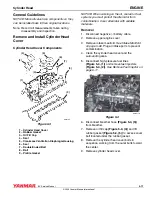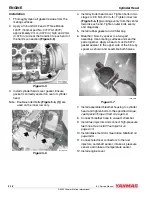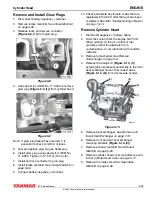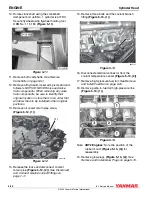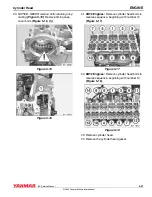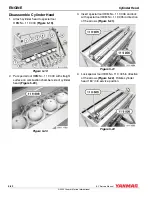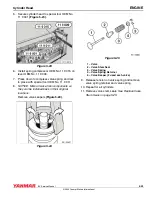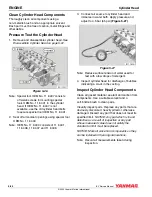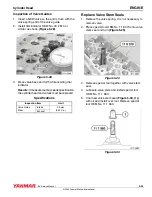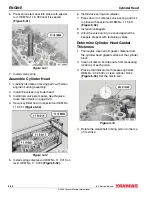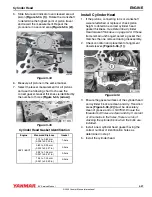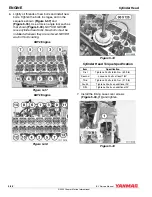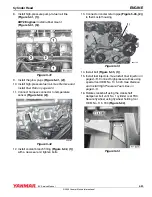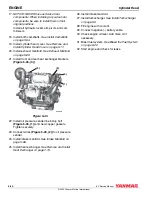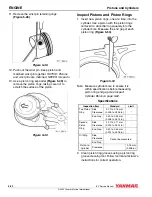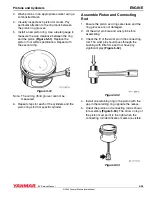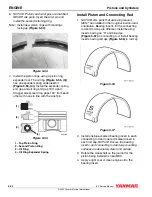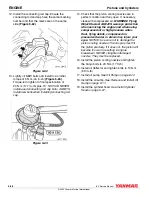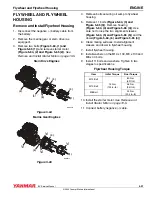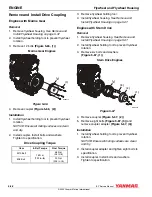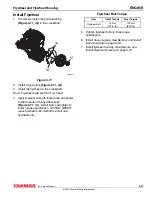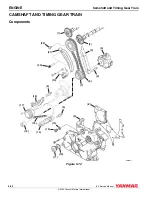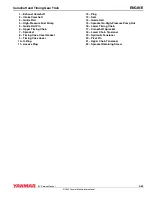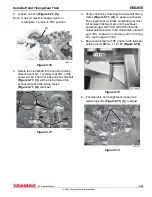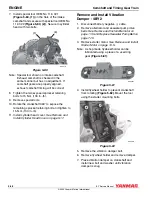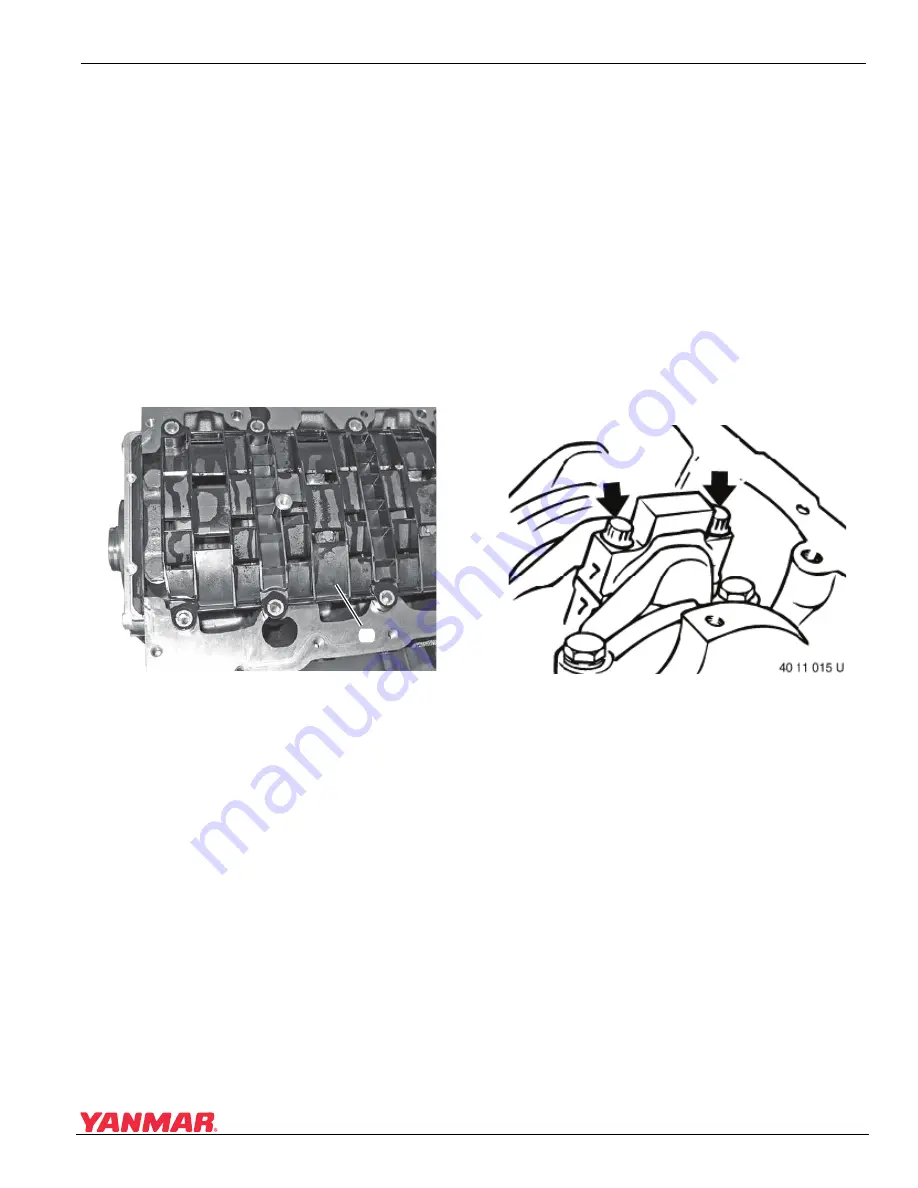
ENGINE
Pistons and Cylinders
12/05
BY Service Manual
5-31
© 2009 Yanmar Marine International
PISTONS AND CYLINDERS
Remove and Disassemble Piston and
Connecting Rod
NOTICE: Keep the piston pin parts, piston
assemblies and connecting rod assemblies
together to be returned to the same position during
the reassembly process. Label the parts using an
appropriate method.
1. Remove cylinder head. See Remove Cylinder
2. Remove oil sump and oil pump. See Oil Pump
3. Remove the oil deflector (Figure 5-46, (1)).
Figure 5-46
Figure 5-46
4. Remove the piston cooling nozzles from the
cylinder block. NOTICE: Use care not to
damage the piston cooling nozzles. The oil
spray must hit the piston precisely. If it does not,
the piston will become too warm resulting in
engine breakdown. NEVER straighten
damaged nozzles. They must be replaced.
5. Remove the ridge at the top of the cylinder if
necessary.
NOTICE: Engines with high operating hours may
have a ridge near the top of the cylinders that will
catch the piston rings and make it impossible to
remove the pistons. Use a suitable ridge reamer
to remove ridges and carbon prior to removing
pistons.
6. Mark each piston and connecting rod before
removing them. They must be installed in the
same location and orientation as they were
removed. NOTICE: Pistons can fall from
cylinder block if engine is inverted. Use care
when removing the connecting rod caps.
7. Remove the connecting rod cap bolts
Figure 5-47
Figure 5-47
8. Remove the connecting rod cap and bearing
inserts.
9. Check the bearing oil clearance as each piston
and rod assembly is removed to help determine
extent of wear. See Measure Oil Clearance on
page 5-59.
10. Push the piston and connecting rod out of the
cylinder. Use a wooden dowel against the
connecting rod if necessary.
NOTICE: NEVER allow the connecting rod to
contact the crankshaft journal during piston
removal. Damage to the bearing journal may
result.
000
3
7
9
7
(1)

